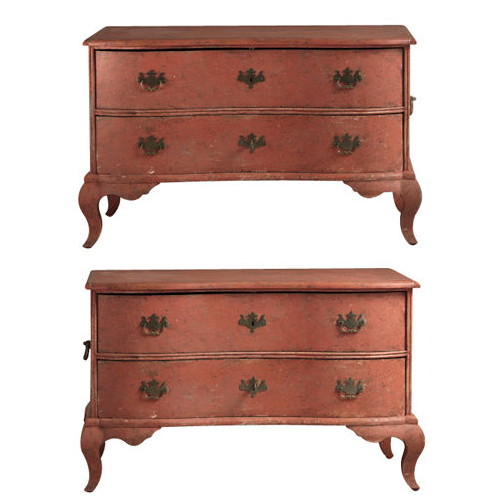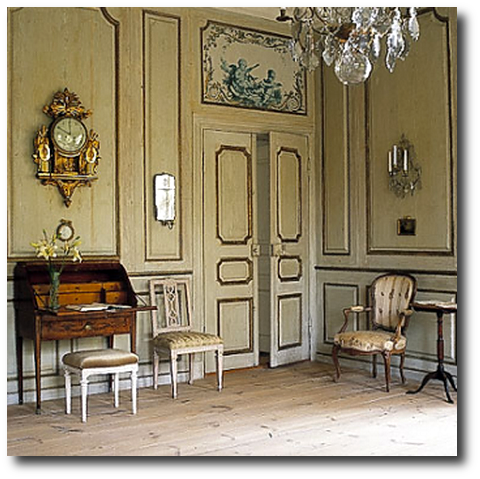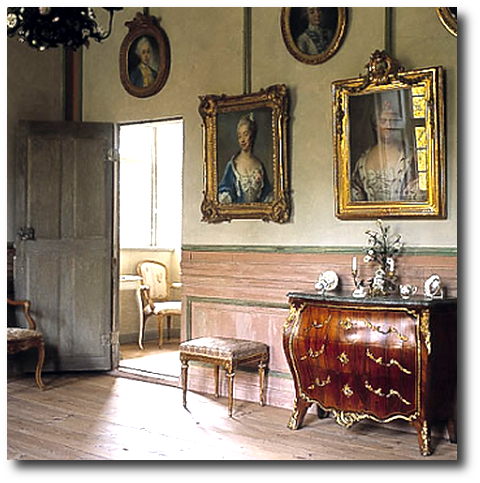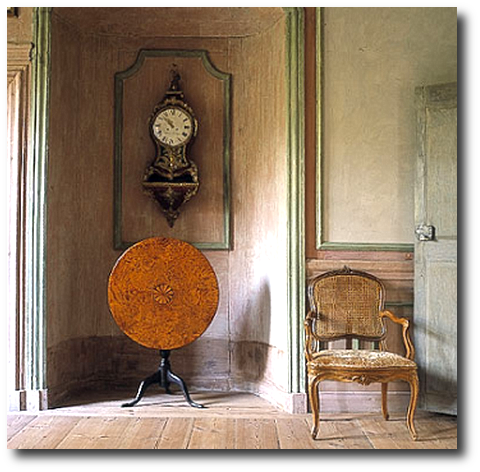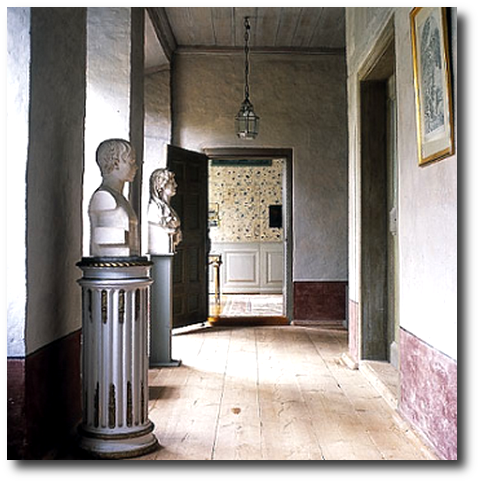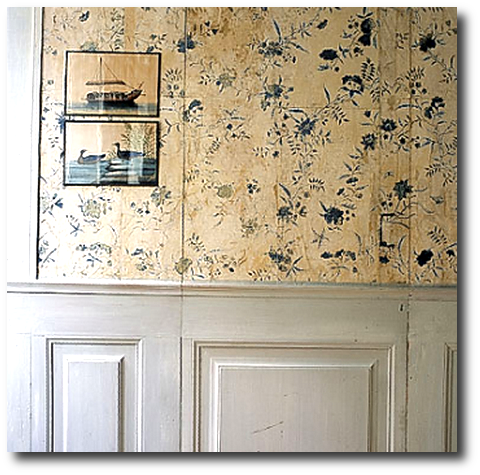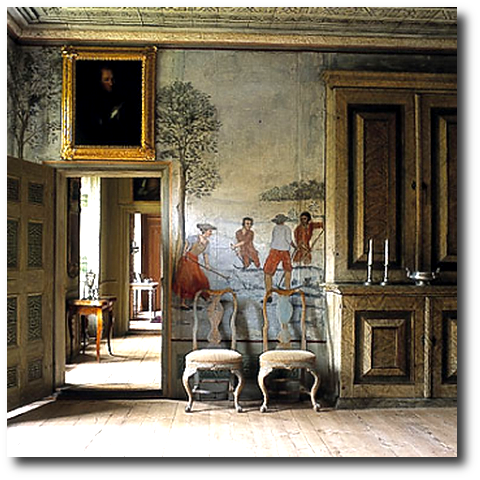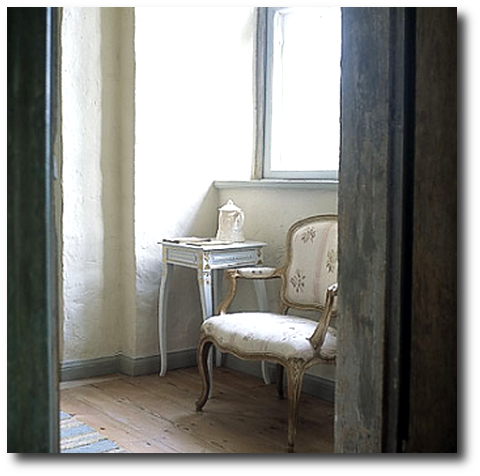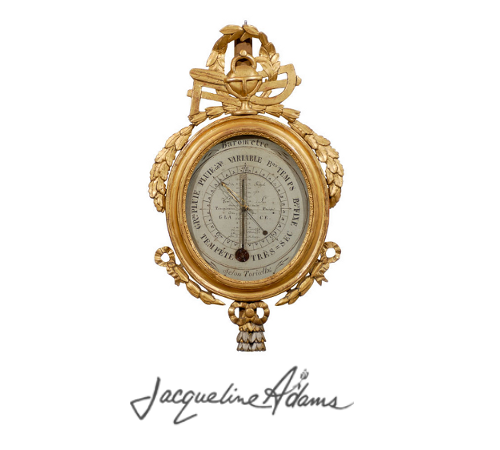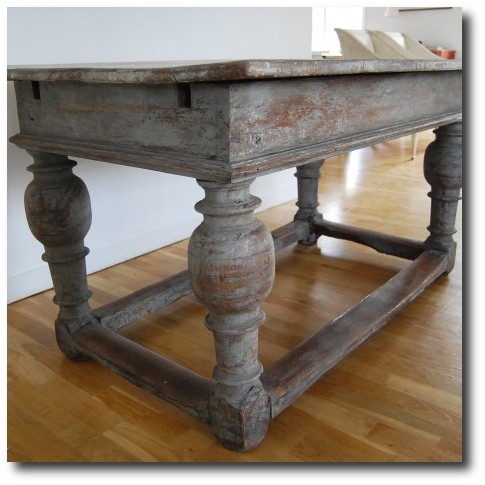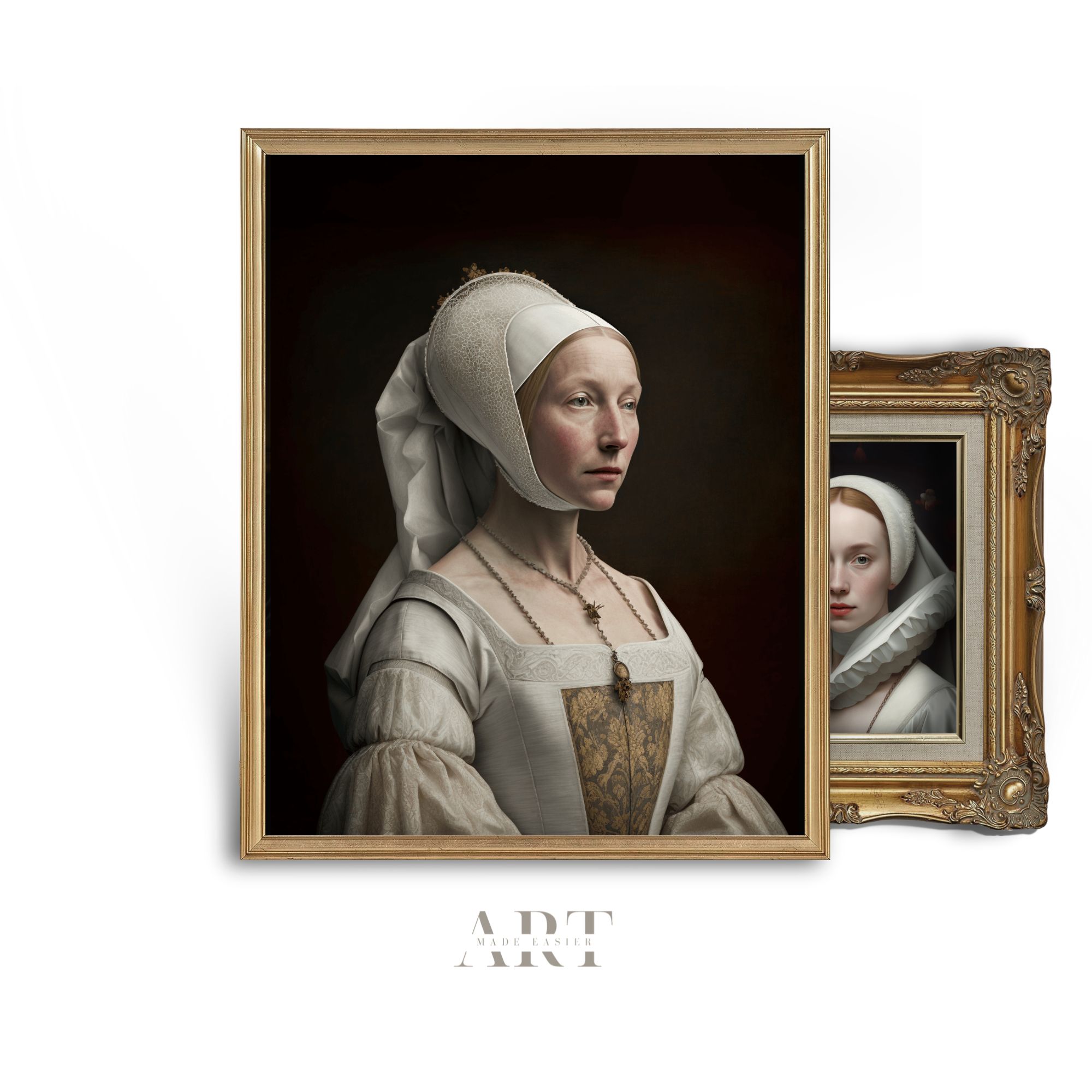69 Inspiring Pictures Of Nordic Country Style Decorating
Bogstad Manor is a protected cultural monument and one of the few country estates in Norway. The history of the estate dates back to 1649, while Norway was still Catholic the land was rented out to tenant farmers by Hovedøya Monastery. After the reformatin in 1536 it was confiscated by the Crown. It was then in 1649 that the Danish-Norwegian King Fredrik III sold Bogstad and number of other farms to Morten Lauritzen. This land provided great timber for sawmills which was rapidly expanding in the 17th century.
The Manor remained in the same family from 1649 until it was left to the Bogstad Foundation in 1955, administered under the Norwegian Folk Museum. The museum has left the estate authentic to the original time period, leaving a monument that shows layers of layers of history.
Peder Anker, became the first Norwegian Prime Minister in Stockholm in 1814 during the union with Sweden (1814-1905). From 1773 to 1780 Peder Anker made some alterations and additions to Bogstad Manor’s main building. He designed the ballroom with inspiration from Versailles, bought a huge collection of paintings in Rome and created the first English landscape park in Norway.
Bogstad Manor is open to the public throughout the year, as well as guided tours of the main buildings are offered from May-September. Bogstad Manor also has copies of artifacts for sale in the museum shop that relate to the history and tradition at Bogstad manor. The museum shop sells glass, pewter and porcelain.
The gardens at Bogstad are sensational to see. The baroque garden was established in the first part of the 18th century. The English style park was created by Peder Anker around 1780 and has canals and ponds for carp and ducks. Peder Anker introduced more than 400 rare trees and plants from abroad. This park became a model for number of parks in Norway.
Bogstad Manor In Norway
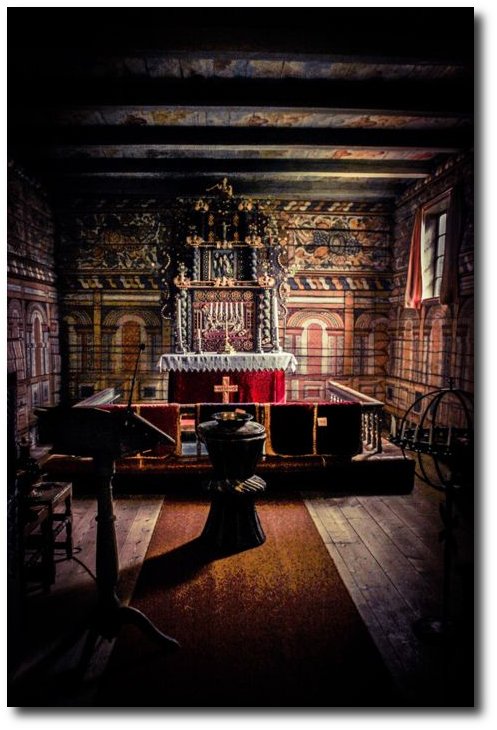 Stave church, Rollag, Buskerud, Norway
Stave church, Rollag, Buskerud, Norway
Picture Credit Visit google.no
Røldal stave church, Hardanger region in Norway. The church was built at the end of the 13 th century and is famous for its crucifix. According to legend it sweats once a year (July 6 th), and the sweat has healing power. After Trondheim (Nidarosdomen cathedral), Røldal was the most important site of pilgrimage in Norway during the middle ages.
Garden Snails – Cepaea Hortensis (Detail) New painted ceiling on antique floorboards.
Peter Korver Amsterdam 2008
Norwegian cubbord beds adorned with wood carvings and Rosemaling
The colorful knotted throw was created to compliment the wall painting.
Visit homedesign.marthastewart.com
“The lady’s bedroom at Skogaholms herrgård (Skogaholm Manor), Skansen open air museum, Stockholm.” Visit upload.wikimedia.org
Antique 1840-1870 Swedish Mora Clock Visit seattle.craigslist.org
Swedish Antiques Visit bukowskismarket.com
Stora Nyckelviken, Stockholm – Visit upload.wikimedia.org
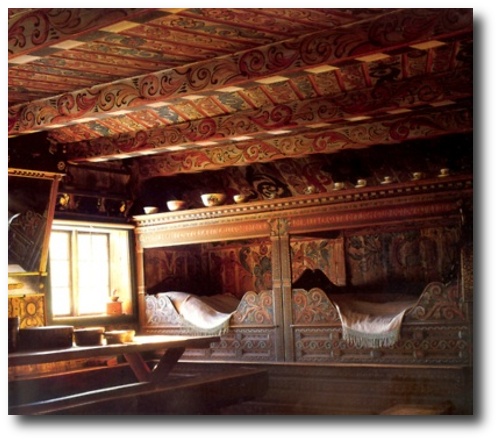 Hall (ivistoga) with intricate rosemaling; Yli farm in Telemark
Hall (ivistoga) with intricate rosemaling; Yli farm in Telemark
Skansen Museum in Stockholm- See More At New Girl’s Accessories Blog
Länna Prästgård, Norrtälje Visit homedesign.marthastewart.com
Skansen Museum in Stockholm- See More At New Girl’s Accessories Blog
Skansen Museum in Stockholm- See More At New Girl’s Accessories Blog
Two Scandinavian Homes Visit inspiracionline.blogspot.com
Lone Ranger Antiques 321 Walnut Street Hollywood, Florida, 33019.
Swedish Palette – A Galvinized Pail Is Used As A Vase
Näs herrgård, Norrtälje, Uppland –Wikipedia
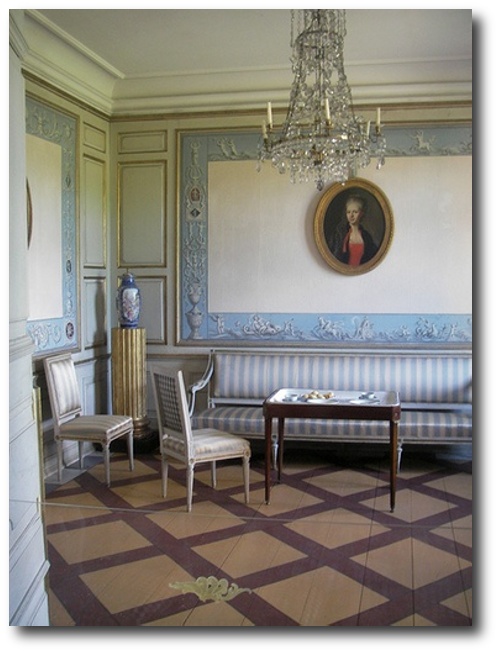 Skogaholms Herrgård, Skansen, Stockholm.
Skogaholms Herrgård, Skansen, Stockholm.
18th century weeks at Skansen by Johanni on Flickr
Sunlight in the dining room at Haga, Haga Pavilion, Late 18th century, Gustaviansk or Swedish Neoclassicism Photograph by Magnus photo Seen on Pinterest
Sweaters by Designer Solveig Hisdal
Traditional Swedish Nordic Dining Rooms – Visit solgarden.se
Visit knowingtheroyals.wordpress.com
Adolf Frederick was born, 14 May 1710 -12 February 1771) was King of Sweden from 1751 until his death. His father was Christian Augustus (1673—1726) duke and a younger prince of Schleswig-Holstein-Gottorp, prince-bishop of Lubeck, and administrator, during the Great Northern War, of the duchies of Holstein-Gottorp for his relative Charles Frederick. His mother was Albertina Frederica of Baden-Durlach. On his mother’s side, Adolf Frederick descended from king Gustav I of Sweden and from Christina Magdalena, a sister of Charles X of Sweden. From both his parents he was descended from Holstein-Gottorp, a house with a number of medieval Scandinavian royal dynasties among its ancestors. Adolf Frederick was also a 13th-generation descendant of Erik V of Denmark; a 13th-generation descendant of Sophia of Denmark and Valdemar I of Sweden; and an 11th-generation descendant of Euphemia of Sweden, Duchess of Mecklenburg and her husband the duke Albrecht.
Pair of Swedish Baroque Commodes created in the 1850s. Unknown Dealer
Nordic Architecture Visit homedesign.marthastewart.com
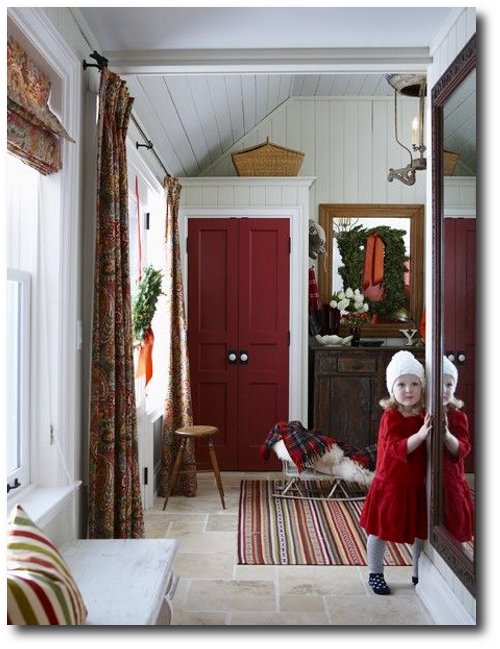 Sarah Richardsons Country House Visit houseandhome.com
Sarah Richardsons Country House Visit houseandhome.com
GRUVGATAN 13 Blog Visit gruvgatan13.blogspot.se
The pale colors and bare windows give this room a Swedish feel….Colefax and Fowler
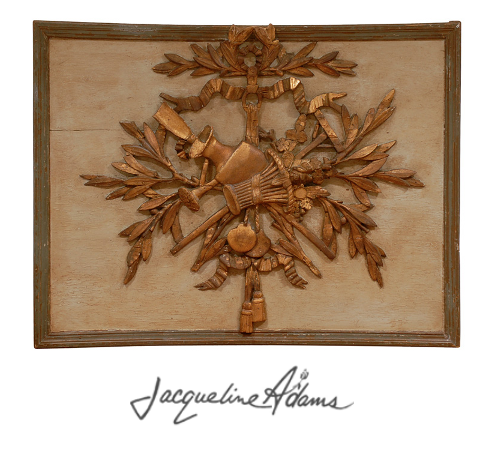 18th Century French Carved Wood Louis XVI Panel
18th Century French Carved Wood Louis XVI Panel
18th Century Giltwood Barometer with Allegory of Science
This comfortable and fresh vacation home displays simple palette combined with clean lines and rustic finishes. In place of a traditional oil painting, designer Jessica McIntyre created an art installation for the dining room with wall brackets from Ballard Designs, pewter chargers from Pottery Barn, antler trophies from Two’s Company and antique Chinese water vessels from Club Cu. The rustic Durango light fixture by Arteriors Home contrasts nicely with the more traditional Zentique dining chairs. The tonal damask rug is from Shaver-Ramsey.coloradohomesmag.com
A Swedish Farmhouse- Source: Skeppsholmen.
Lennart Castelius Antiques & Interiors- here
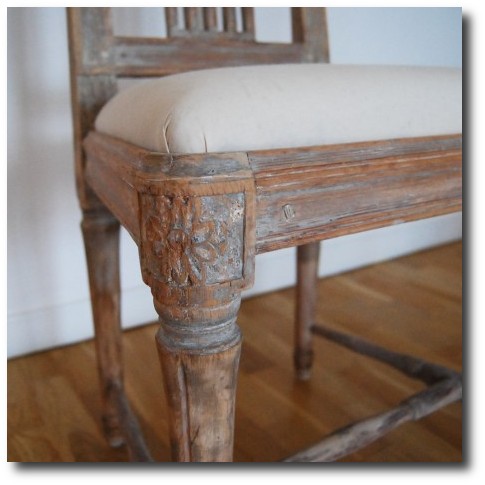
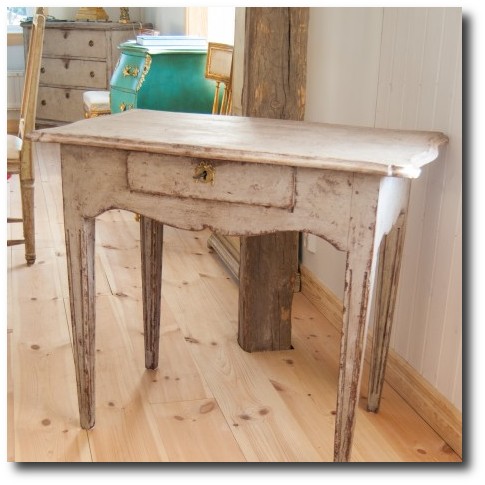
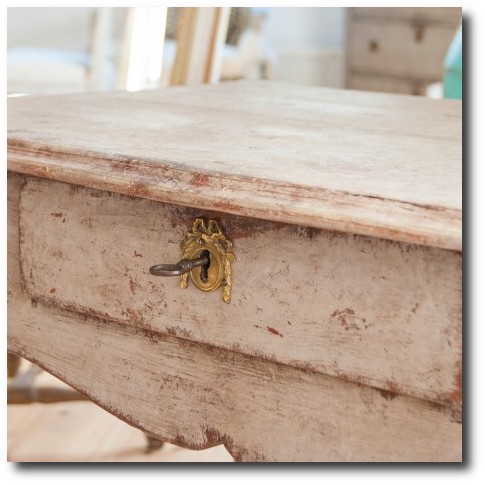 Lennart Castelius Antiques & Interiors
Lennart Castelius Antiques & Interiors
Pictures:












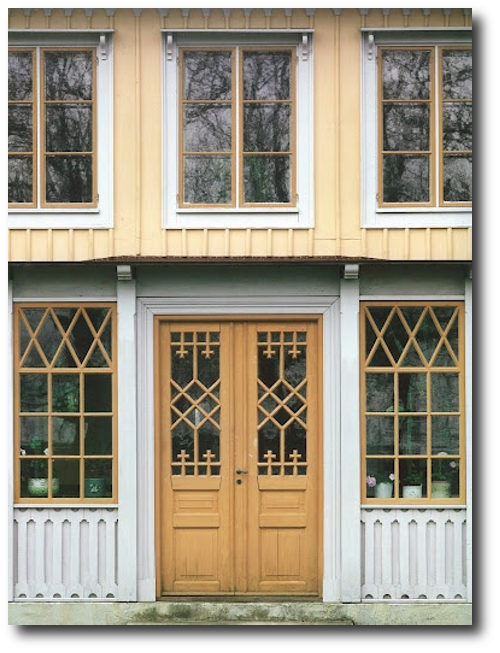






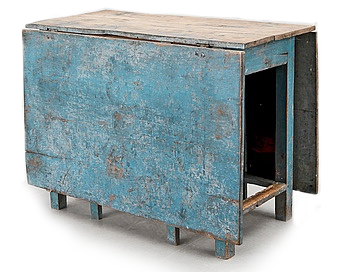



Save
Quiet luxury inspired by 18th-century Sweden
Light - Patina - Heritage

Restoration Tools
- Matte Topcoat
- Pro Grade Brush Set
- Finishing Sealer In Matte
- Bronze Spray For Hardware
- Sticks To Everything Primer
- Dead Flat Varnish
- Stick To Everything - Matte Primer
- Transparent Aged Glaze
- Sticks To Everything Brown Primer
- Prima Transfers
- Dyke Brown Glaze
- Escutcheons
- Medallion Silicone Mold
- French Key Molds
- Portico Scroll
- Rusty Paint Finishes
Recent Posts
- 200 Swedish Antiques A Person Can Look For
- Rococo In The Nordic Countries
- For The Love Of Collecting Antiques – A Swedish Interior
- Gustavian Furniture – How to get the look – Ulla Kloster
- 3 Swedish Must Haves – Decorating A Home Around Swedish Antiques
- The Beautiful Wall Paintings Of von Echstedtska gården In Sweden
- 400 Professional Designers Picked Green As The New Color To Watch
- 5 Scandinavian Interior Design Tricks – Megan Slack
- 30 Gray Toned Paint Colors For Swedish Styled Interiors – Behr
- DIY Upper Kitchen Cabinets – Lindsay – White Buffalo Styling
- Bringing The Garden In For The Winter
- The Home Office – Why Not Make Yours Unique ?
- The Light And Airy Furniture Of Sweden
- Slipcovers Have Always Been Popular Through Time – Swedish Decorating
- The Couple Behind D. Larsson Interior and Antikhandel – Swedish Antiques
- 6 Colors You’ll Find In Every Scandinavian Home – Laura Barry
- 5 Decorating Mistakes Not To Make – By Gabrielle Savoie
- Designer Marshall Watson’s Scandinavian Newport Beach Home
- Designer Marshall Watson’s Scandinavian Summer House
- Swedish Inspired Kids Bedrooms
- 5 Kitchen Design Lessons You Can Learn from Scandinavian Interiors
- Jenny’s DIY Wide-Plank Plywood Flooring Studio Renovation
- Decor Mistakes All 20-Somethings Make
- Can I Stain Over Paint To Produce A Patina?
- Q&A With Swedish Designers Edie Van Breems and Rhonda Eleish
- How To Avoid Yellowed White Painted Furniture With General Finishes Products
- Colleen Martin, Founder of Swede Collection Tells Us Her Journey Of How She Began Reproducing Gustavian Furniture
- Expect To See More Warm Grays, Blues And Creams In Gustavian Decorating
- 8 Brands Of Gold Spray Paint Were Compared To Find The Best Color
- Essential Characteristics Of 18th Century Swedish Interiors
- Gustavian Style By Kristie Barnett
- 7 Places To Find Swedish Design For Toddlers
- Study Shows The Gustavian Period Has Defined All Tastes Through Time In Sweden
- Mix Old and New Like the Scandinavians Do- Chloe Taylor
- Swedish Furniture Design – What Makes The 1800’s So Obsessive
- 5 Pieces Of Wise Decorating Advice From Tricia Foley
- Impressive History Of Fine Swedish Table Linen
- Linen Has An Incredible History- Find Out Why……
- Life In 17th Century Norway & Sweden
- How To Select The Right Linen For Your Children’s Bedroom- Kids Room Decor Ideas
- Nordic Style Kids Bedroom Decor Ideas
- Decorator Tricia Foley’s Signature White Interiors
- 10 Tips From Interior Designer Furlow Gatewood
- Living In Norway- Norwegian Life In The 18th & 19th Centuries By Elisabeth Holte
- Investing In Mora Clocks – Expert Advice From Jo From Swedish Interior Design
- International Interior Decorating Magazines Worth Buying
- Swedish Council Of America Articles
- 5 Homes Decorated Around The Nordic Style
- Swedish Reproduction Furniture At Solgarden
- Behind The Rundale Palace in Latvia
- Nordic Style Historical Interior Decorating Books – Living Museums in Scandinavia
- Decorating Around Red- Historical Interior Design Ideas
- Florence De Dampierre Comments On Nordic Furniture In Sweden And Denmark
- 12 Designers Pick Their Favorite Paint Colors – House Beautiful
- 7 Of The Most Famous Swedish Furniture Designers And Decorators
- New Research Suggests Swedish Furniture In The 1700’s May Have Had Strong Colors
- Swedish Tripod Tilt-Top Candle Stand Tables
- Decorators Who Have Embraced The Nordic Style – 30+ Pictures
- A Look Behind Skogaholm Manor -18th century Swedish Decorating
- Decorating With Swedish Country Antiques- Darlene Peterson Buchanan
- 12 Interior Designers Pick Their Favorite Swedish Paint Colors
- 50+ Decorating Books Worth Looking At
- Swedish Decorating Inspirations In Yellow, Ivory And Beige- 50+ Pictures
- Decorating Around The Color Green – Swedish Style
- A Dallas, Texas Home Decorated Around The Swedish Style
- 3 Houses Decorated Around The Rustic Swedish Style
- Reproduction Distressed Furniture And Home Decor From Bliss Studio
- Buy The Swedish Style For Less
- 3 Swedish Style Homes Featured In Magazines
- Swedish Antiques From Debenham Antiques
- The History Behind Jean Bernadotte Otherwise Known As Karl Johan
- 5 Faux Wall Painting Techniques That Are Easier Than You Think
- Swedish Kids Rooms: 6 Ideas To Get The Look
- 5+ Nordic Homes Decorated Around White
- 10 Of The Best Tours In Sweden
- 3 Rustic Scandinavian Country Homes – Borrow Ideas From Norway and Denmark
- Spring Summer Checks and Florals For The Swedish Home
- 70 Swedish Furniture Pieces That Sell For Less- Swedish Decorating On A Budget
- Decorating With Blue: Swedish Style Decorating Ideas
- An Interview With Daniel Larsson- The Go-To Guy For Swedish Antiques
- 7 Scandinavian Country Decorating Books
- 75 Swedish Nordic Pinterest Pages! Oh Yes…More Eye Candy!
- 69 Inspiring Pictures Of Nordic Country Style Decorating
- 20 Scandinavian Gift Ideas
- 5 Ways To Add Life Into Worn-Out Furniture
- Mora Clocks: Investing In Swedish Heritage
- How To Decorate With Botanicals
- Buying Property In Sweden
- Get The Swedish Look By Installing Tongue And Groove Paneling
- The Lavish Interior Of The Swedish Häringe Castle
- The Swedish Wreta Gestgifveri Inn
- Paint It White He Says…. Washington Interior Designer Darryl Carter – Swedish Decorating
- 5 Pro Painting Tips For Black Furniture
- The Swedish Artist Carl Larsson
- A Guesthouse Decorated in The Swedish Style
- Swedish Furniture From Bukowski Market
- 216 Selections From Wallpaper Direct – Swedish Decorating
- A Look Behind The National Museum of Stockholm
- Antique Swedish Dealer Jane Moore’s Home Veranda Magazine
- A Swedish Collected Home In Upstate New York – Swedish Gustavian Decorating
- $100+ Solid Braided Rugs
- 60 Scandinavian Country Folk Art Books On Amazon
- 50 Examples Of Swedish Folk Country Interiors
- Designers Pick Their Favorite Gray Paints
- HOW TO: Paint Gustavian Finishes
- “Söderbo” A Home Untouched Since 1920
- Designer Martha Angus Loves Gustavian Style
- Les Indiennes Fabrics
- Decorating Secrets- 60 Quotes From The Best Experts In Design
- Swedish Kakelugn Stoves
- Helen Olsen’s Rungstedlund Home Revealed In Gods & Gardar Magazine
- The 1700 Collection Swedish Furniture
- Swedish Plaster Medallions
- The History Behind Empire Furniture From The Karl Johan Period -Liza Laserow
- Swedish Styled Wallpaper
- Nordic Style Drapery And Window Coverings
- The Gentle Palette of Swedish Antiques-Corey Amaro
- Custom Reproduction Swedish Furniture From Garbo Interiors
- 30 Spectacular Picks From Frantz Hemeleers Antiques
- Go Bold With Red- Part 1 Grand Sophisticated Interiors
- Go Bold With Red- Nordic Country Interiors
- The Baroque Style Of Switzerland
- Daniel Romualdez’s Swedish Montauk Home
- The Shocking History Behind “Emerald Green” Paint
- Stylish Looks For Slip-covering Your Furniture
- The Best 5 Websites For Purchasing Antique Hardware
- Fired Earth’s Anniversary Paint Collection
- Swedish Furniture Auctions -Uppsala Auktionskammare
- Louis Masreliez- The Designer Behind Gustav III’s Pavilion At Haga Park
- A Nordic Design Staple- The Swedish Kakelugn Tile Stove
- Swedish Antique Mirrors
- How To Decorate A Child’s Room In The Swedish Style
- Ruby Beets Swedish Rustic Home
- The Country Side Of Sweden- An All White Based Home
- Akerö in Södermanland, Sweden
- Krusenberg Herrgård: An 18th Century Swedish Luxury Hotel
- Wood Plank Flooring, A Swedish Design Must Have – Part 1
- Vinyl Plank Flooring, A Swedish Design Must Have – Part 2
- Laminate Wood Flooring, A Swedish Design Must Have – Part 3
- Plywood Plank Flooring, A Swedish Design Must Have – Part 4
- Painted Wood Flooring, A Swedish Design Must Have – Part 5
- The Romantic Baroque Style: Part 1- Stromholm
- The Romantic Baroque Style: Part 2 King Gustav Vasa
- The Romantic Baroque Style: Part 3 Skokloster & Steninge Palace
- The Romantic Baroque Style: Part 4 – A Collectors Home
- The Romantic Baroque Style: Part 5 Add Color
- Sweden’s Empire Decorated Rosersberg Palace
- The Most Beautiful Rococo Library In The World:The Anna Amalia Library
- 4 Resources For Swedish Decorating
- How Important Are Accent Pieces In A Swedish Home?

